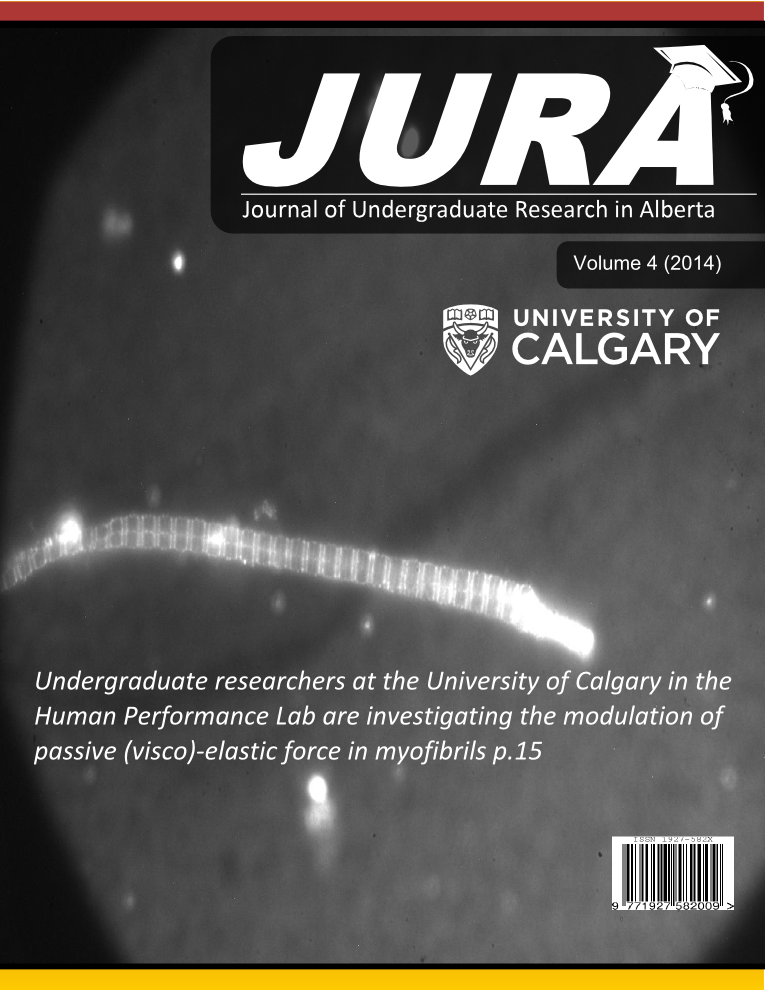Valuing life in our soils: Effects of microbial activity in vermicompost tea on sunflower fitness
Keywords:
vermicompost, sunflowers, drought, soil microbesAbstract
Vermicompost tea (VCT) is a concentrated solution of microbes and nutrients that has been shown to increase plant fitness. This study investigated the effects of microbes and nutrients in VCT on the fitness of sunflower (Helianthus annuus) under ideal-water and drought-simulated conditions. Three treatments (water, VCT without microbes, and VCT) were applied to groups of twenty greenhouse-grown sunflowers under ideal-water and drought-simulated conditions. Growth rates and plant biomass were measured as proxies for fitness. Bacterial plates and carbon dioxide respiration tests measured soil microbial activity. We found that VCT increased plant growth rate and biomass under drought-simulated conditions and decreased plant growth rate and biomass under ideal-water conditions. VCT without microbes decreased plant fitness under both water regimes. Given that bacterial abundance was highest in soils with VCT added, the differing effects of VCT under ideal-water and drought-simulated conditions may have been due to the presence of different microbial communities. For example, certain microbes can increase drought-tolerance of plants by solubilizing limiting nutrients, while others can harm plants when water is in excess due to anaerobic processes. Plant-microbe symbiotic relationships, nutrient availability and hydrological factors need to be considered when evaluating the potential benefits of VCT application to agricultural crops.Downloads
Download data is not yet available.
References
J. H. C. Godfray, J. R. Beddington, I. R. Crute, L. Haddad, D. Lawrence et al., Science 327(5976), 2010.
N. Alexandratos, J. Bruinsma. “World agriculture towards 2030/2050: the 2012 revision”. ESA Working paper No. 12-03. Rome, FAO. 2012
L.R. Oldeman, in Soil Resilience and Sustainable Land Use, D.J. Greenland and I. Szabolcs, Eds. CAB International, Wallingford, UK, 1994, p.p. 99– 118.
T. Weis, J Agrar Change 10(3), 2010.
L. Brussaard, Ambio 26(8), 1997.
E. Barrios, Ecol. Econ. 64(2), 2007.
B. Lugtenberg, F. Kamilova, Annu. Rev. Microbiol. 63(1), 2009.
E.J. Gray, D.L Smith, Soil Biol. Biochem. 37(3), 2005.
D. Haas, G. Defago, Nat. Rev. Microbiol. 3(4), 2005.
B. R. Glick, Z. Cheng, J. Czarny, J. Duan, Eur. J. Plant Pathol. 119(1), 2007.
J.I. Fritz, I.H. Franke-Whittle, S. Haindl, H. Insam, R. Braun, Can. J. Microbiol. 58(7), 2011.
A. Pant, T.J.K. Radovich, N.V. Hue, N.Q. Arancon. Compost Sci Util 19(4), 2011.
F.S. Mansour, G.A.M. El-Sayed, Egypt. J. Biol. Pest Control 21(1), 2011.
C. Pane, G. Celano, D. Villecco, M. Zaccardelli, Crop. Prot. 38(12), 2012.
B.A. Vick, J. Hu in Genetics, Genomics and Breeding of Sunflower, J. Hu, G. Seiler and C. Kole, Eds. Science Publishers, Enfield, NH, 2010, p.p. 313–326.
M. Stevens, “Plant Guide: Annual Sunflower Helianthus annuus.” United States Department of Agriculture Natural Resources Conservation Service, University of California, Davis, CAL, 2007.
J. Pumpanen, P. Kolari, H. Ilvesniemi, K. Minkkinen, T. Vesala, et al., Agric. For. Meteorol. 123(3-4), 2004.
M.C. Whitlock, D. Schluter, The Analysis of Biological Data, Roberts and Co. Publishers, Greenwood Village, COL.
J. Pathma, N. Sakthivel, SpringerPlus 1(26), 2012.
S. Mayak, T. Tirosh, B. R. Glick, Plant Physiol. Biochem, 42(6), 2004.
P. Jupp, E. I. Newman, J. Appl. Ecol. 24(1), 1987.
M.C. Drew, J.M. Lynch, Annu. Rev. Phytopathol. 18(1), 1980.
T.V. Suslow, J.W. Klepper, M.N. Schroth, T.J. Burr. Calif Agr 33(11), 1979.
S. Scheuerell, W. Mahaffee, Compost Sci Util 10(4), 2002.
P.B. Reich, D.W. Peterson, D.A. Wedin, K. Wrage, Ecol. 82(6), 2001.
V. Chaudry, A. Rehman, A. Mishra, P.S. Chauhan, C.S. Nautiyal, Soil Microbiol. 65(2), 2012.
N. Alexandratos, J. Bruinsma. “World agriculture towards 2030/2050: the 2012 revision”. ESA Working paper No. 12-03. Rome, FAO. 2012
L.R. Oldeman, in Soil Resilience and Sustainable Land Use, D.J. Greenland and I. Szabolcs, Eds. CAB International, Wallingford, UK, 1994, p.p. 99– 118.
T. Weis, J Agrar Change 10(3), 2010.
L. Brussaard, Ambio 26(8), 1997.
E. Barrios, Ecol. Econ. 64(2), 2007.
B. Lugtenberg, F. Kamilova, Annu. Rev. Microbiol. 63(1), 2009.
E.J. Gray, D.L Smith, Soil Biol. Biochem. 37(3), 2005.
D. Haas, G. Defago, Nat. Rev. Microbiol. 3(4), 2005.
B. R. Glick, Z. Cheng, J. Czarny, J. Duan, Eur. J. Plant Pathol. 119(1), 2007.
J.I. Fritz, I.H. Franke-Whittle, S. Haindl, H. Insam, R. Braun, Can. J. Microbiol. 58(7), 2011.
A. Pant, T.J.K. Radovich, N.V. Hue, N.Q. Arancon. Compost Sci Util 19(4), 2011.
F.S. Mansour, G.A.M. El-Sayed, Egypt. J. Biol. Pest Control 21(1), 2011.
C. Pane, G. Celano, D. Villecco, M. Zaccardelli, Crop. Prot. 38(12), 2012.
B.A. Vick, J. Hu in Genetics, Genomics and Breeding of Sunflower, J. Hu, G. Seiler and C. Kole, Eds. Science Publishers, Enfield, NH, 2010, p.p. 313–326.
M. Stevens, “Plant Guide: Annual Sunflower Helianthus annuus.” United States Department of Agriculture Natural Resources Conservation Service, University of California, Davis, CAL, 2007.
J. Pumpanen, P. Kolari, H. Ilvesniemi, K. Minkkinen, T. Vesala, et al., Agric. For. Meteorol. 123(3-4), 2004.
M.C. Whitlock, D. Schluter, The Analysis of Biological Data, Roberts and Co. Publishers, Greenwood Village, COL.
J. Pathma, N. Sakthivel, SpringerPlus 1(26), 2012.
S. Mayak, T. Tirosh, B. R. Glick, Plant Physiol. Biochem, 42(6), 2004.
P. Jupp, E. I. Newman, J. Appl. Ecol. 24(1), 1987.
M.C. Drew, J.M. Lynch, Annu. Rev. Phytopathol. 18(1), 1980.
T.V. Suslow, J.W. Klepper, M.N. Schroth, T.J. Burr. Calif Agr 33(11), 1979.
S. Scheuerell, W. Mahaffee, Compost Sci Util 10(4), 2002.
P.B. Reich, D.W. Peterson, D.A. Wedin, K. Wrage, Ecol. 82(6), 2001.
V. Chaudry, A. Rehman, A. Mishra, P.S. Chauhan, C.S. Nautiyal, Soil Microbiol. 65(2), 2012.
Downloads
Published
2014-07-31
Issue
Section
Articles
License
Authors retain all rights to their research work. Articles may be submitted to and accepted in other journals subsequent to publishing in JURA. Our only condition is that articles cannot be used in another undergraduate journal. Authors must be aware, however, that professional journals may refuse articles submitted or accepted elsewhere—JURA included.


